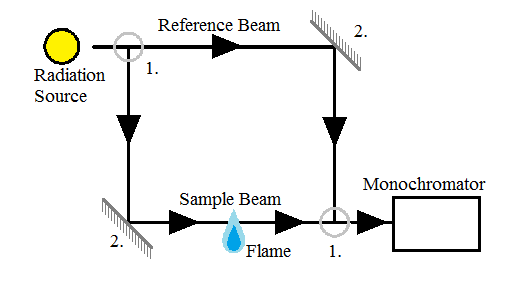| << Chapter < Page | Chapter >> Page > |

Sample preparation is extremely varied because of the range of samples that can be analyzed. Regardless of the type of sample, certain considerations should be made. These include the laboratory environment, the vessel holding the sample, storage of the sample, and pretreatment of the sample.
Sample preparation begins with having a clean environment to work in. AAS is often used to measure trace elements, in which case contamination can lead to severe error. Possible equipment includes laminar flow hoods, clean rooms, and closed, clean vessels for transportation of the sample. Not only must the sample be kept clean, it also needs to be conserved in terms of pH, constituents, and any other properties that could alter the contents.
When trace elements are stored, the material of the vessel walls can adsorb some of the analyte leading to poor results. To correct for this, perfluoroalkoxy polymers (PFA), silica, glassy carbon, and other materials with inert surfaces are often used as the storage material. Acidifying the solution with hydrochloric or nitric acid can also help prevent ions from adhering to the walls of the vessel by competing for the space. The vessels should also contain a minimal surface area in order to minimize possible adsorption sites.
Pretreatment of the sample is dependent upon the nature of the sample. See [link] for sample pretreatment methods.
| Sample | Examples | Pretreatment method |
| Aqueous solutions | Water, beverages, urine, blood | Digestion if interference causing substituents are present |
| Suspensions | Water, beverages, urine, blood | Solid matter must either be removed by filtration, centrifugation or digestion, and then the methods for aqueous solutions can be followed |
| Organic liquids | Fuels, oils | Either direct measurement with AAS or diltion with organic material followed by measurement with AAS, standards must contain the analyte in the same form as the sample |
| Solids | Foodstuffs, rocks | Digestion followed by electrothermal AAS |
In order to determine the concentration of the analyte in the solution, calibration curves can be employed. Using standards, a plot of concentration versus absorbance can be created. Three common methods used to make calibration curves are the standard calibration technique, the bracketing technique, and the analyte addition technique.
This technique is the both the simplest and the most commonly used. The concentration of the sample is found by comparing its absorbance or integrated absorbance to a curve of the concentration of the standards versus the absorbances or integrated absorbances of the standards. In order for this method to be applied the following conditions must be met:

Notification Switch
Would you like to follow the 'Physical methods in chemistry and nano science' conversation and receive update notifications?